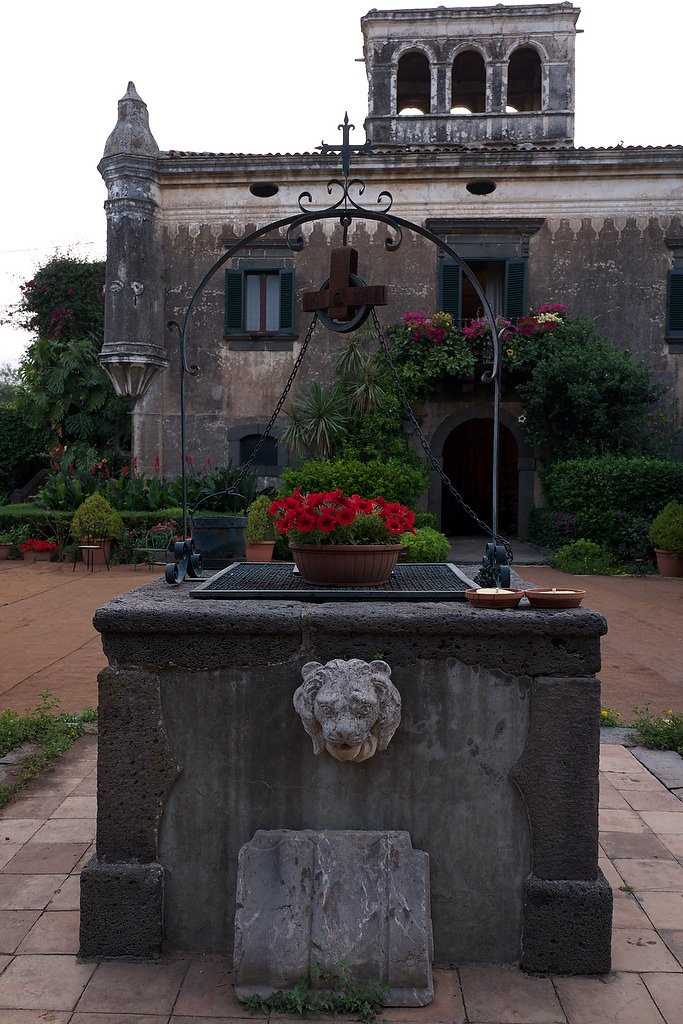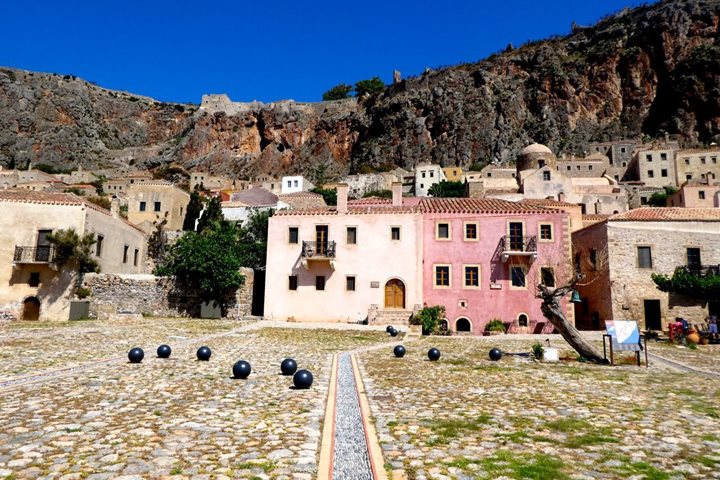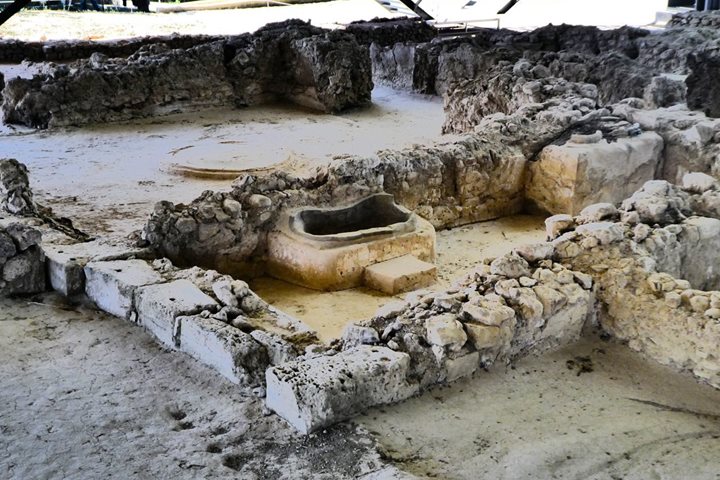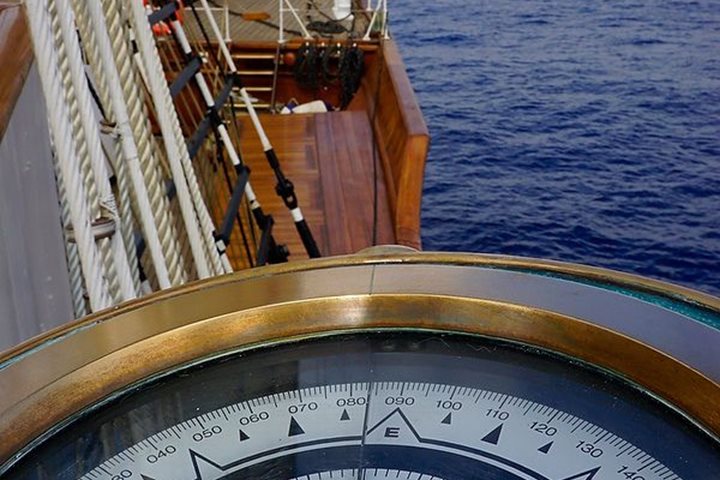Scylla and Charybdis. One should never get caught between a rock and a hard place, and the legendary Rock of Scylla with the Whirlpools of Charybdis in the Straits of Messina was the place that put the fear of the gods into ancient sailors as well as mariners of the 21st century. At two miles wide the Straits may not look challenging, but the S-turn of the Straits of Messina with its wild currents from the different temperatures and tides that connect the Tyrrhenian Sea north of Sicily with the Ionian Sea to the south is a challenge to the helmsman and pilots of even the big cruise ships today. Aeolus, the God of the Winds and son of Poseidon, lives on nearby Lipari and makes the Straits even more treacherous, as Odysseus learned in Homer’s Odyssey.
We were prepared to enter the Straits from the north at 0700, but the marine traffic control ordered us in early so that an oncoming cruise ship docking in the port of Messina would be able to pass behind us and complete its turn in front of the Strait. A very large electrical tower stands on either side of the Straits, remnants of an earlier age of power lines that connected Messina with the mainland. Electricity is now run by cable under the Strait, but the highest powerline towers of Europe remain standing as a monument to a bygone era. Fishermen in tiny boats stayed on the current lines, and the Straits were soon in our wake.
The wind was against us, and then dropped completely, as gargantuan Mount Etna appeared in the haze ahead. There was no point in setting sails, so we went in to anchor under the impressive promontories of Castelmola and Taormina while Massimo gave a talk about his 12 silent weeks in a Calabrian Monastery. You’ll be forgiven if you don’t believe that Massimo could be silent for three months.
We enjoyed an afternoon visit up to Taormina, which features the beautifully situated Greco-Roman Theater that faces Mount Etna. Like most Greco Roman theaters, the Greeks built them first into the hillsides with spectacular natural backdrops, and the Romans later closed them in with elaborate scanae frons that could reach three stories. We then walked down the busy pedestrian Corso Umberto to return to Sea Cloud for a quick shower and change for the highlight of the day: a very special dinner at the 18th century Castello degli Schiavi villa. This was the setting for many scenes of the three Godfather films, and the owner Baron Franco Platania couldn’t have been a more charming host. He greeted us in the gardens with prosecco, antipasta, and music, showed a short refresher video to remind us of many of the Godfather scenes, took us for a tour of the house, and then we enjoyed an unforgettable Sicilian dinner in the cellar that featured outstanding red wine of the Nero d’Avola grape from the rich volcanic soils of Mount Etna. It was a night we will never forget, and we will all go back home to watch the Godfather films again!







